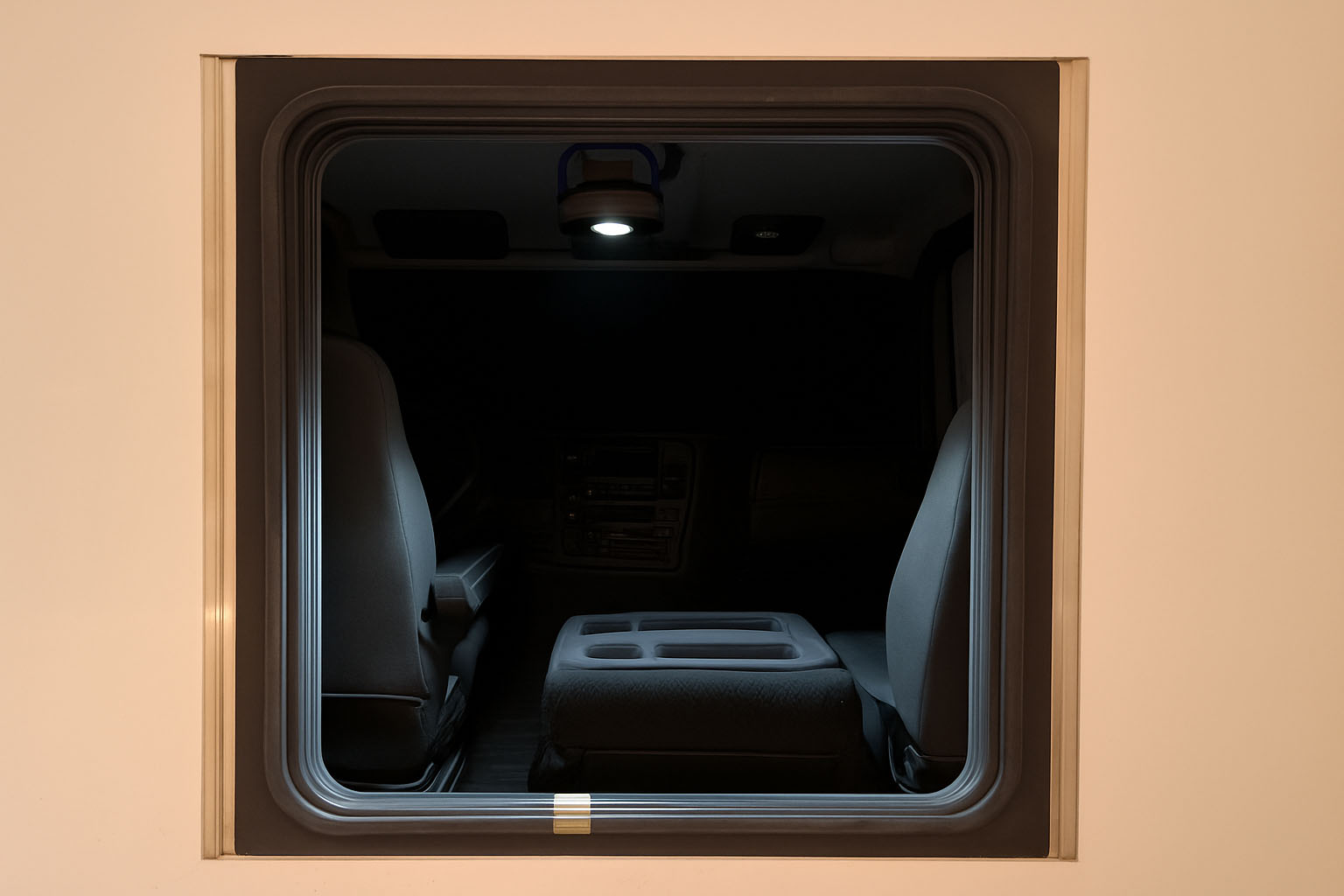
Have you ever thought of creating a pass-through in a box truck? There are many reasons you might consider it. You may want to turn the cargo box into a camper or sleeper, or perhaps you need a mobile workshop. The possibilities for this type of conversion are practically endless. A pass-through is a convenient way to move from one compartment to the other. Because a box truck does not normally have this feature, you will need to create one. The question then becomes: how do you add one yourself? Below, I hope to provide a complete answer to that question posed by someone who is considering this modification.
Question:
“I’m looking into either buying a straight box truck or a chassis and putting a box on it. One thing I’ve noticed is that most don’t have a pass-through from the driver’s seat into the box. Do any manufacturers make a box with one, or is this something I’ll need to build?”
Answer:
This is a great question to ask before starting a project like this, because adding a pass-through is a big commitment. In the end, it will make a major difference in the truck’s functionality and ease of movement. It’s rare to find a box truck with a factory-installed pass-through, so if you want to move easily from the cab to the box without stepping outside, you’ll need to do the modification yourself.
Here are some things you should know before embarking on a project like this.
Cab Height and Box Alignment
You will need to determine the size and shape of the opening. You are limited by the height of the truck cab and the position where the box is mounted. In most cases, the floor of the box is higher than the floor of the cab, which limits the usable height of the opening. It’s critical to make sure that both openings line up with each other and have identical perimeter measurements.
The Rear Truck Cab Wall
The truck’s rear wall is made of sheet metal, and precision is the key to cutting the opening. “Measure twice, cut once” is good advice here. The cab opening must line up perfectly with the one in the bulkhead. During this modification, carefully consider interior trim, insulation, and wiring to avoid damage that could create bigger problems later. For perimeter measurements, account for irregularities in the sheet metal, such as bends and ribs, which can affect the size of the cut. Once the metal is cut, protect the raw edges from rust by priming and painting them as preventative measures.
The Box Truck Front Bulkhead
The front wall of the cargo box is called the bulkhead. This is basically the flat structural partition directly behind the truck cab. In its standard form, the wall is solid and completely closed off, with no door or window. To create a pass-through, the bulkhead will need to be cut to size. Depending on the wall thickness, you may need to fabricate a mounting surface or flange to allow the accordion boot to attach securely.
Opening Configurations
As mentioned earlier, the openings must have the same perimeter measurement and be perfectly aligned. Before making the first cut, you’ll also need to think about the corners. When using an accordion boot, avoid sharp 90-degree corners. The boot won’t seat properly and may fail to seal tightly. Instead, design the corners as either a radius of at least 1 inch or cut them at a 45-degree angle. Both methods work—it’s simply a matter of which suits your installation best.
The Importance of a Flexible Seal
In most box trucks, there will be a gap between the cab and the cargo box. Because they aren’t solidly connected, there will always be some flex and movement. This requires a flexible seal. If the connection is rigid, you risk damaging the pass-through opening or the truck itself. The best way to fill this gap is with an accordion boot rubber gasket. This product is designed specifically for this type of project. It flexes with the movement of the cab and box while keeping the opening weather-tight.
Creating a Pass-Through
When adding a pass-through:
- Cut the Openings – Cut openings in both the cargo box bulkhead and the rear of the cab. Always soften the corners to avoid sharp 90-degree angles.
- Maintain Flexibility – Do not attach the cab and box in a solid, fixed way. Trucks flex when going down the road, and a rigid connection can cause structural damage.
- Use a Flexible Seal – The best option is a rubber accordion boot gasket. This absorbs movement between the cab and box, seals out wind and moisture, and creates a clean, professional look.
Why It Matters
A pass-through adds convenience, safety, and comfort:
- Convenience – Move between the cab and box without going outside.
- Security – Stay inside at night instead of climbing out of the cab.
- Weather Protection – Avoid rain, snow, or wind when accessing the back.
That’s exactly what accordion-style rubber gaskets are built for. At AccordionBoot.com, we provide flexible pass-through seals that let the cab and box shift independently while staying watertight. With rounded corners on your cutouts and the right boot gasket, you’ll have a clean, professional pass-through that’s built to last.
Rubber Boot Seal
You can order rubber boot material for your special project requiring pass through access. These seals are extruded from a durable EPDM synthetic rubber and incorporate a flexible spring steel clip for attachment to any flange. This material is sold by the foot. Choose between accordion boot or compression boot.
“Disclosure: This post contains affiliate links, which means we will earn a commission if you click on a link and make a purchase. Please note that all recommendations are based on our honest opinions and that you are under no obligation to use these links. Your support helps us keep the site running and provide valuable content. Thank you!”